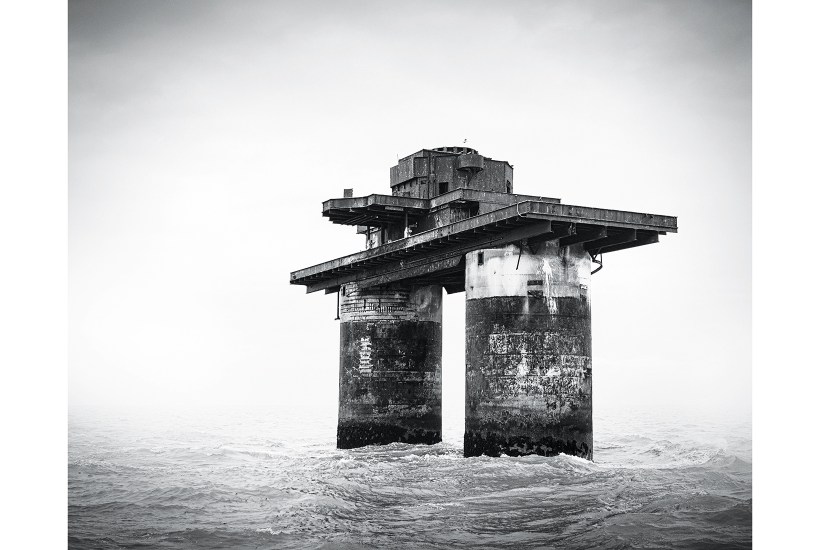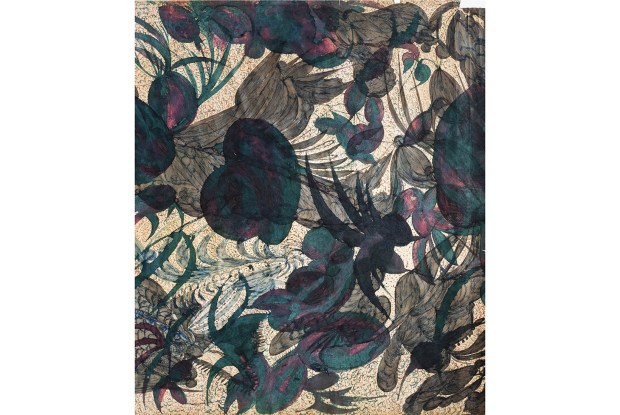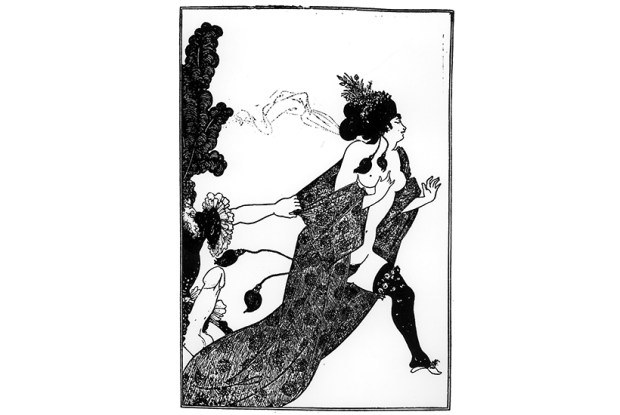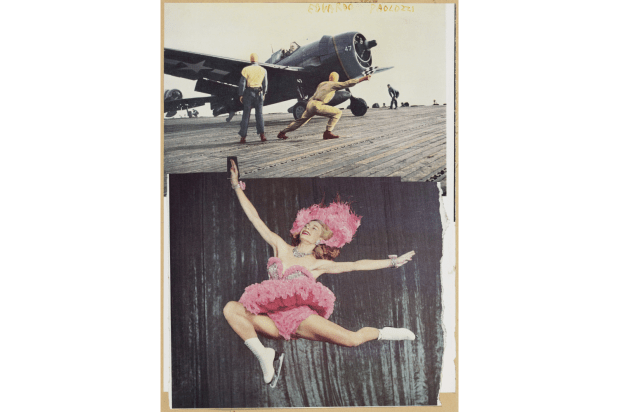When Oscar Wilde famously claimed: ‘All art is quite useless’, he may not have had artistic subjects in mind. But it’s certainly true that since the Romantic era, artists have had a special affection for the superannuated. An image of an abandoned building with some sort of past, not necessarily glorious, appeals to our emotions, be it Rachel Whiteread’s ‘House’ or Constable’s ‘Hadleigh Castle’. Even ephemera pre-loved by strangers evoke nostalgia when incorporated in the shadow boxes of Joseph Cornell or the assemblages of Peter Blake. But what about things that are not just obsolete but have never had any use at all? That’s the curious question prompted by a new exhibition at Bodmin Keep, Cornwall’s Army Museum.
Concrete Castles is a sequel to the exhibition Capture the Castle organised by the artist and curator Tim Craven at Southampton City Art Gallery in 2017. That show traced the romantic story of the British castle from its arrival on these shores with William the Conqueror in 1066; this one focuses on its modern mini versions: the rather less romantic concrete pillboxes that sprang up like pimples across the south and east of England in the summer of 1940.
Small defensive fortifications have a long and not particularly distinguished British history stretching back through the Martello towers built during the Napoleonic wars to the Roman milecastles punctuating Hadrian’s Wall and the Iron Age brochs dotting the north and west of Scotland. Of all of these, the pillbox is the least distinguished and — apart from the Martello towers, which never saw action either — the most historically useless. But Craven has a soft spot for hardened defences of all descriptions and during lockdown infected 29 fellow artists with his enthusiasm, persuading them to spend their enforced isolation scouring the country for concrete castles to capture on paper, canvas and, in one case, concrete.
Collapsed, overgrown and camouflaged by 80 years’ accumulated moss and lichen, pillboxes are not always easy to find. To coincide with this show, Bodmin Keep commissioned local photojournalist Mark Pearson to document Cornwall’s second world war fortifications in a series of atmospheric photographs, but he managed to miss one right under his nose just opposite the entrance to Bodmin Parkway Station. According to my taxi driver, in the 1950s it was home to a troglodytic tramp; he remembered smoke curling from its roof.
A bit of smoke would add drama to this exhibition: there are none of the searchlight beams, puffs of cordite, barrage balloons and bombers that enliven the skies of wartime paintings of coastal defences by Eric Ravilious and co. It’s all dead still: a blanket of quiet has descended along with the creepers and cloaks of earth that now shroud these structures. Injecting romance into the subject is an uphill struggle, though Will Vaughan achieves it in ‘Brean Point’, a moody etching of a ruined pillbox perched on rocks that recalls the inky drawings of the St Helier Hermitage made by Victor Hugo while in exile on Jersey in the 1850s. Judith Jones strikes an uncanny note in ‘Pillbox Guarding Mainline Train Route from London to Weymouth at Twilight’ with the help of some luscious David Lynchian photographic lighting, while the yawning black mouth of Fiona McIntyre’s ‘Auxiliary Secret Bunker’ is more film noir. Pete Jarvis, by contrast, goes for the picturesque: the setting of his ‘Type FW3/22 Pillbox, Hayling Island’ is so Sunday-paintable one imagines an invading Führer would have had to stop to bust his watercolours out of his backpack. Good diversionary tactic.
Time has transformed the appearance of several structures: the hard edges of Tim Craven’s ‘Type 22 Pillbox, Devizes’ are so softened with age that it now resembles a shuttered concrete haystack and Kevin Tole’s ‘Overgrown Bunker, Mothercombe’ is so shaggy with grasses it could be mistaken for a woolly mammoth. Other artists emphasise the hard-edged abstraction of these geometric combinations of Platonic solids that wouldn’t look out of place in Dürer’s ‘Melencolia’. Peter Davies reduces his ‘Brutalist Bunker IOW’ to a few linocut planes of strong flat colour, while the BASK collective’s cast concrete sangars look like scaled-up versions of De Stijl sculptures by Georges Vantongerloo. ‘Every dimension within these structures is designed around the human form,’ says BASK sculptor Jim Shepherd — hence their resemblance to the empty shells of long-departed soft-bodied molluscs.
Not all the fortifications are strictly pillboxes. The subject of Ben Fenton’s ‘Have Been Myself Alone (Dymchurch, Grand Redoubt)’ is an artillery fort on the Romney Marsh coast, a relic — like the Martello towers — of the Napoleonic wars refortified during the second world war. Anti-tank cubes and ‘dragon’s teeth’ also feature, given the sunny Cézanne treatment in Robert Brooks’s watercolours and ill met by moonlight in Richard Bavin’s eery ‘Minsmeer, Tawny Owl Calling’, with its serried rank of blocks recalling the spooky stone sphinxes in Frantisek Kupka’s symbolist ‘The Way of Silence’. Only Waj Mirecki and Kevin Tole convey the bathos of these obsolete defensive structures that never saw action, Mirecki’s puny pillboxes huddled beneath the giant arches of the Chappel Viaduct and Tole’s ‘Hope Cove Bunker’ on the brink of terminal collapse with a ‘DANGER: UNSTABLE CLIFF FACE’ notice slapped over its sightless windows.
The catalogue is marvellously informative on the history of these brutalist barnacles meant to be manned by Dad’s Army volunteers. As part of Home Forces Commander-in-Chief General ‘Tiny’ Ironside’s anti-invasion plan following the retreat from Dunkirk, 28,000 were erected by the Directorate of Fortifications and Works in the summer of 1940. There were nine specified designs, each issued with a DFW number: the most common was type 24, an irregular hexagon holding up to eight soldiers; type 25 was circular, type 26 was square and type 27 was octagonal with room for an anti-aircraft gun. As supplies of cement ran short, they were sunk into the ground.
Some were disguised as bus shelters, toilets, pigsties and summerhouses, or fitted by Home Guard humorists with signs reading ‘Hotel Continental’. But their brutalism served a cosmetic purpose, reassuring the civilian population that defensive measures were in place. How effective they would have been in practice is debatable. With their limited field of vision pillboxes had to be guarded by external sentries and in October a War Office report admitted that under attack they could be death traps. By early 1942 they had been deemed redundant; in October 1943 — after the discovery by code-breakers at Bletchley Park that Hitler’s Operation Sealion had been called off — they became officially surplus to requirements. Useless.
I suppose it would be syllogistic to argue that being useless qualifies pillboxes as art and I doubt that Wilde, the evangelist of ‘the house beautiful’, would have approved. But a case could perhaps be made for recognising General Ironside as a proto-installationist. Plonked down to no useful purpose in the countryside, the pillbox could reasonably be regarded as the original ‘sculptural intervention in the landscape’. Rachel Whiteread hasn’t cast the interior of one yet but she’s getting warmer: three years ago she dumped a concrete Nissen Hut on Yorkshire’s Dalby Forest. This exhibition could be ahead of the curve. Has the pillbox’s time finally come?
Got something to add? Join the discussion and comment below.
Get 10 issues for just $10
Subscribe to The Spectator Australia today for the next 10 magazine issues, plus full online access, for just $10.
Concrete Castles: Britain’s War Defences of 1940 is at Bodmin Keep until 4 December.
You might disagree with half of it, but you’ll enjoy reading all of it. Try your first month for free, then just $2 a week for the remainder of your first year.














Comments
Don't miss out
Join the conversation with other Spectator Australia readers. Subscribe to leave a comment.
SUBSCRIBEAlready a subscriber? Log in